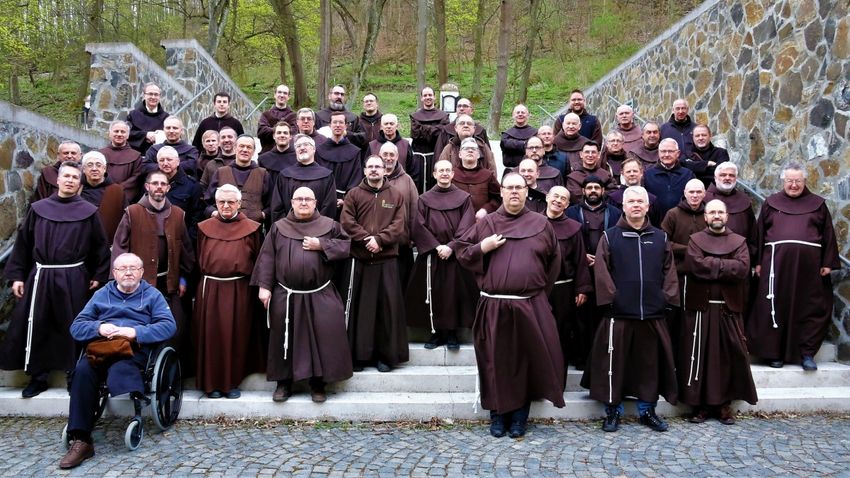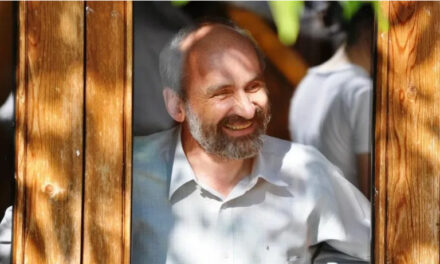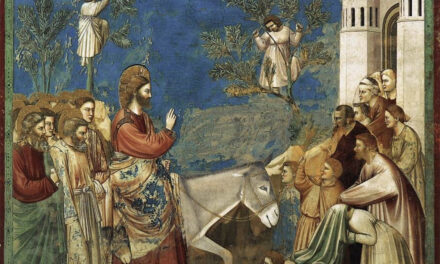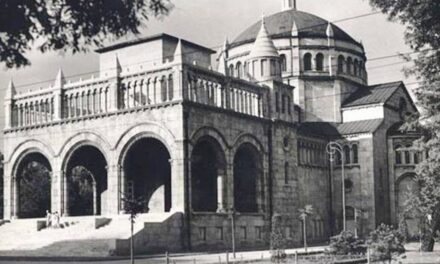The confirmed rule of the Franciscan order is eight hundred years old.
The rule of St. Francis of Assisi was confirmed by Bull III on November 29, 1223, almost 800 years ago. Pope Honorius. However, for the Franciscan order, in addition to the celebration of the confirmed regula, a whole series of centenaries began in the period between 2023-2026. The establishment of the Greccio nativity scene is also 800 years old, and for the joy of this, the little brothers remember that in 1223 - during the Advent season - Saint Francis reconstructed the place of Jesus' birth in a cave in Greccio.
thus starting the Christmas tradition of nativity scenes that continues to this day.
In addition, there is stigmatization, the writing of the Hymn to the Sun, and the transit of St. Francis, that is, his transition from earthly life to heavenly life. So there is plenty of reason to remember and celebrate.
What do we know about the Franciscan Rule?
By the Franciscan regula - Latin name Regula Franciscana - we mean the regulations given to the Franciscan monks by Saint Francis of Assisi. Following the teaching of Francis, three orders were created, which live according to the same rules, but they are three stages of development of the same rule.
The first is Formae Vitae or proto-regula, this III. Ince approved it verbally in 1209-1210. The next, Regula non bullata, also known as Regula I, is a 23-chapter regulation adopted by the General Chapter of 1221. Finally, the Regula bullata, or Regula II., which, on the advice of Segni Ugolini (later Gregory IX), Francis reduced to twelve chapters by keeping the commandment of total poverty:
this became the so-called third regula, which was finally approved in 1223 by III. Accepted by the bull of Pope Honorius Solet annuere.
The regulation was later supplemented by the future Saint Bishop Bonaventura. The rule of the secular third order IV. Pope Miklós in 1289, the rule of the Regular Third Order by Leo X in 1521, and the revised rule of the Franciscan Secular Order were approved by the Holy See in 1978.
"God called me to the path of simplicity"
It is well known that Francis of Assisi did not want to hear about the traditional rules. To those who spoke to him about such things, he replied: "God invited me to the path of simplicity, and he showed me that. So I don't want you to name me other rules, neither Ágoston's, nor Bernát's or Benedek's".
According to Bishop Bonaventura, the real novelty of this rule is that it professes the way of life that Jesus left to the apostles.
Angelo da Clareno, an Italian Franciscan theologian, marked the originality of the regula in the following points:
• the evangelical character,
• the complete renunciation of possessions and the abandonment of the use of money,
• no property (no church, no monastery),
• unconditional obedience,
• the ban on entering nuns' monasteries,
• missionary commitment (pagans, Saracens)
• walking barefoot, traveling on horseback only if necessary,
• never ask for a letter of recommendation from the Roman Curia,
• no glossary of rules.
"Regula invites us, like our brothers and sisters of previous generations, to start a dialogue with it. The meeting conditions are the same as in any dialogue: you have to open up to the other person, you have to respect their differences, but at the same time you have to try to understand their intentions. You have to let the other person speak, you have to listen carefully, you shouldn't immediately impose your own opinion on them, you have to listen with openness and awareness that, like every meeting, this one will have an effect on me: it will say something new, it will move you, it will comfort you, it will provoke you, ask. If I don't trust the other person and don't expect anything from them, then I can't enter into a real dialogue with them.
And if nothing happens between the two parties, it means that they never met"
- say Father Kapistzrán Varga and Father Jakab Várnai in the book The Franciscan Regula.
The spirituality of the Lesser Brothers
The Order of the Friars Minor was founded by Saint Francis of Assisi, and following his spirituality, prayer and devotion, fraternal life, minority - i.e. poverty, "smallness" and solidarity with the outcasts - and evangelization have a special place in the lives of the friends. .
From time to time, the slackness in living the way of life represented by Saint Francis haunted the religious community,
therefore, it was always necessary to reach back to the roots.
During the order reforms, new communities were often formed. One of the most significant splits in the community occurred in 1517, when the so-called observant branch of the order - whose legal successor today is the Franciscan order - permanently separated from the conventuals. The community formed in this way later broke up into smaller units. The many smaller communities XIII. During Leo's papacy, in 1897, it was united in the Order of the Lesser Brothers.
After that, the order began to increase in numbers again, as well as its territorial expansion, especially in the Latin American region. The II. since the Vatican Council, however, the total number of the order has been decreasing,
but the Franciscan spirituality is still experienced today by more than 15,000 brothers around the world -
They live in a total of 2,651 monasteries in 49 countries, divided into 110 religious provinces, and serve nearly 2,200 parishes. Most of them are in Italy, the United States of America, Poland and Brazil.
The Franciscans in Hungary
The first brothers arrived in Hungary during the lifetime of Saint Francis, around 1225-26, and then their first province, which was called the Esztergom or Hungarian Province, became independent in 1232-33. The Province of Hungary expanded more and more after the Tatar invasion, until it was reformed by the then provincial governor Fábián Igali, and from then on it was called the Reformed Province of Hungary of the Conventuals. However, in 1517, they gave up the conventual name and permanently joined the observant family - the stricter branch of the first order.
The observant brothers also appeared in Hungary through Bosnia and expanded very quickly in all parts of the kingdom. According to history, the observant brothers in the monasteries
they were very poor and prayerful, in the church they were fiery-spirited heralds of the Gospel truth, humble exhorters for the defense of the Christian faith, and comforters of the people.
St. John of Kapistrán, Blessed Pelbár of Timisoara and Osvá Laskai stand out among them for their holiness and knowledge.
The Turks who invaded Hungary and the storms of the Reformation strongly hindered the Franciscan life that began to develop, but in the occupied territories the younger brothers were almost the only ones who took care of the faithful.
According to tradition, this is why the people called them friends.
With the passing of the 16th and 17th centuries, dotted with wars, not only the number of brothers, but also the number of houses and even provinces increased. From the Marian order, the Province named after King Saint László, from the houses of the Salvatorian province, the Province of Saint Stephen King of Transylvania, in the second half of the 16th century again to Slavonia, and even to Hungary, from the Hungarian houses of the brothers of the Bosnyák-Bányavidék Province, and finally in 1757 a new province, Capistrán A Province named after Saint John was established.
In 1900, three of the five provinces existing within the borders of Hungary were formed: the Marian, the re-founded Capistranus, and in Transylvania, the Stefanita. By the end of the First World War, only two, the Marian and the Capistran, remained in Hungary. Between the two world wars, the history of the provinces was characterized by new foundations, ever-increasing pastoral activity, other modern initiatives, and the large number of vocations.
The communists and the Franciscan martyrs
In 1950, the communist state banned the monastic life and confiscated the properties. After the closure of their eighteen houses, between 1950 and 1989, the Marian brothers - of whom 15 suffered prison sentences and one brother died a martyr's death - lived scattered, without a common life, as secular priests or civil workers. The capistranists, not all of whom were forced to live in dispersal - it may well be with a limitation of numbers, in addition to the imprisonment of 32 brothers and the killing of several, instead of the previous 26 - could live legally in three communities, maintaining and running two gymnasiums.
With the arrival of the year of change, 1989, it was possible for the provinces to reclaim their taken properties and start work again on the places that had once been forcibly abandoned. On June 24, 2006, the top leadership of the Order from the Capistrano and Marian Provinces established the Franciscan Order Province Named after Our Lady of the Hungarians as the only legal unit of the Order of Friars Minor in our country. It currently has 113 members in fourteen monasteries:
Four locations in Budapest, in addition to Esztergom, Gyöngyös, Mátraverebély-Szentkút, Nagyszőlős, Süme, Szeged, Szentendré, Szécsény, Szombathely and Zalaegerszeg.
Curiosity:
***
On the occasion of the jubilee, the Franciscan order shares excerpts from the 800-year-old confirmed rule . Every Friday, the younger brothers read a part of it in their own communities, so that they carry in their minds and hearts: "life according to the holy Gospel".
Featured image: Chapter 2023, Facebook page of the Franciscan Order













